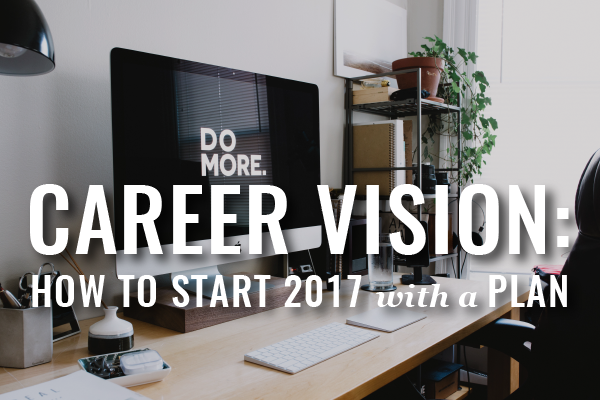To compete as a lawyer, you need a vision defining your future success. And then you plan to reach it.
Strategic career movement requires you to (1) set aside time, (2) clarify next steps, (3) invest in deep work, and (4) build your external reputation. Career and business plans do not need to be complex and complicated. They serve a simple purpose to mold and nudge you to think, feel, and behave in alignment with your desired and intended future.
Start your career or business planning with a clear description of the salient optics of your intended, successful future vision. Set your vision statement for 2-5 years from today. Visualize the details of your actions and existence within that future state. Once you have described long-term success, you can distill that picture into component parts and prioritize them into milestones – specific, measurable, and time bound goals. Next, break down those milestones into precursor goals with shorter time frames and those shorter-time frame goals into discrete tasks that fill in the blanks of a sentence that says: If it is (Fill in a date.), then I will (Fill in with the description of a discrete task.)
When you think about describing your future vision, milestones, and tasks, consider the following in a compare and contrast manner:
- Where will you be? vs. Where are you today?
- What will you be doing? vs. What are you doing now?
- What will be your brand identity (title, role, responsibilities, clients, workplace, mindsets, feelings, behaviors)? vs. What is your brand identity today?
- Who will be in your network of relationships? vs. Who is part of your network today?
- Describe the most valuable relationships in your future network. vs. Describe the most valuable relationships in your network today.
- Describe your technical and soft skills in your future vision. vs. Describe your technical, and soft skills today.
Then think about goals that are HARD: Heartfelt, Animated, Required, and Difficult. Heartfelt means you can easily list 3 reasons why it’s important to you. Animated means you can describe what you want to find yourself doing on a typical day 1, 3, and 5 years from now. Required means it’s so urgent that you know what you’re doing today and can identify what you need to have done to stay on track in 1 month, 90 days, and 5 years. Difficult means that you’ll need 3-5 new skills to achieve your goal, and you have a plan to acquire them.
When you describe your milestones, shorter-term goals, and tasks make your descriptions SMART: Specific, Measurable, Actionable, Relevant, and Time-bound. Specific means that anyone reading it, knows exactly what you will be doing. Measurable means you can objectively determine the progress toward the milestone, goal, or task and when it is complete. Actionable means that only your actions are necessary. You are not depending on someone else to do something. Relevant means that the milestone, goal or task is important to attaining your future vision. Time-bound means you assigned a due date for completing the milestone, goal, or task.
Be specific and narrow with your goals. Achieving many small goals and acknowledging your success along the way is much more energizing than dwelling on a lack of attaining a long-term goal. Calendar in activities that you usually put on the back burner first. Anything that you find difficult or unpleasant, do first. Otherwise, they become unfinished tasks that take up energy.
Since you’ll be the person responsible for executing your plan, you need to cultivate helpful mindsets and discard the ones that create obstacles. People are better at managing themselves in the midst of uncertainty and chaos and pursue their vision and goals even through stress, if they: (1) believe they are capable of achieving new heights through hard work and perseverance, (2) avoid self-doubt, and (3) believe that their efforts are important. Since we often face uncertainty and chaos in today’s world, having the right mindset can be the most important factor in effectively designing and executing your business or career plan.
Mindsets are ways of thinking. Your thoughts affect emotions and actions; emotions affect thoughts and actions; and actions affect thoughts and emotions. If one element is difficult to change, aim your effort to change a different element. If you discover that you are holding on to unhelpful mindsets, change them with positive self-talk, changes to your body language, and changes to your daily routines. Tips:
- Establish written, inspirational goals for yourself.
- Make a list of positive, empowering “I” phrases:
– “I deserve…”
– “The more I do…the closer I am to my goal of …” - Acknowledge all successes and celebrate the big ones.
- When someone compliments your work efforts or products, say “Thank you,” instead of being self-critical.
- Expand your network to include people, who uplift your spirits, as well as people, who are experts and accomplished in ways that you admire.
- Start and end your day with five minutes of undistracted meditation.
Nurture your mindsets so that you become willing to take on difficult problems and solve them, unwilling to allow barriers to stand in the way of your success, and dedicated to keeping your plan and progress on track. For best results, start your planning today.
With an empowered mindset, you’ll find the right balance for you between organic career growth and development and strategic career management, and you’ll sense when you’re ready to shift more focused on strategic efforts. For career growth and development, you can job shadow, explore lateral moves, attend classes/trainings, hold book clubs, and seek a mentor. Strategic career management happens as you transition the planning we’ve discussed to action, engaging the process and people – seeking formal support from your manager or mentors, any other critical parties, and any organizational departments like HR, while measuring and reviewing your success.
For more help setting direction and navigating transitions in the legal profession, start working on our Career Research + Development Workbook Series.




